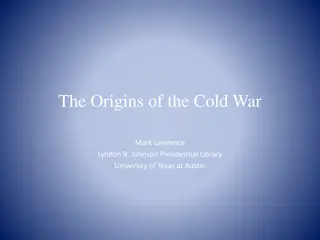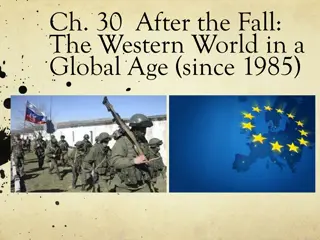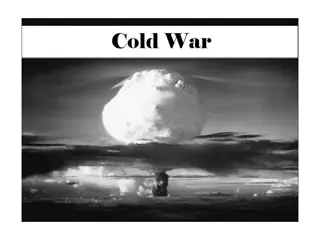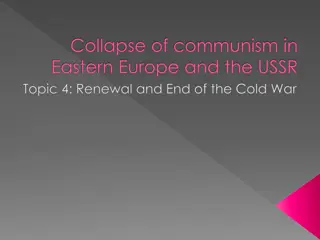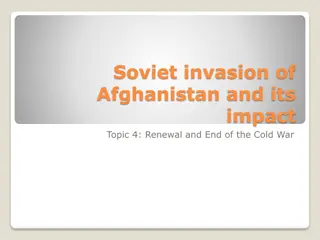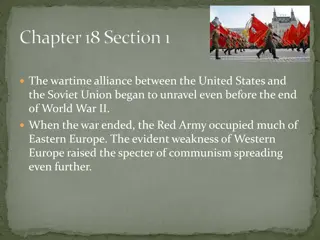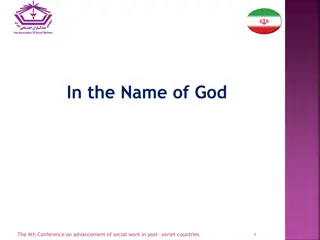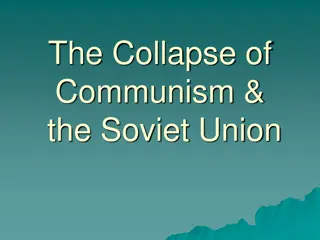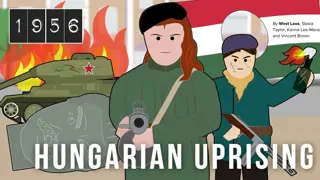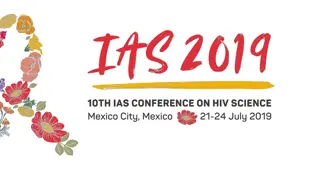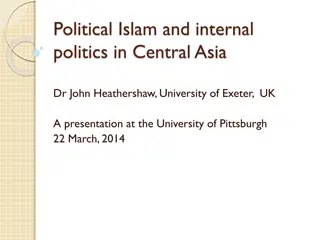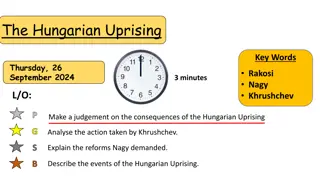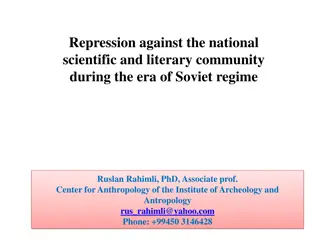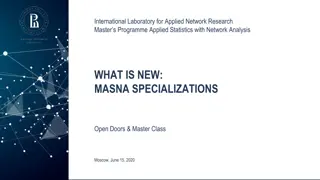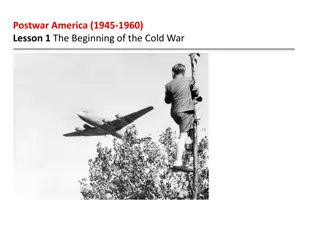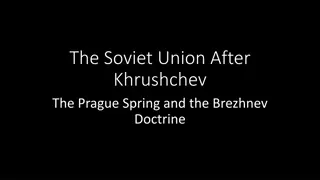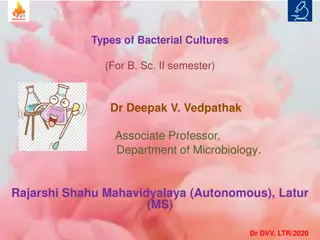University Cultures in the Post-Soviet Era at Moscow School of Management
This article explores the sub-cultures that have developed in universities in the post-Soviet era. It focuses on the work of Andrey Shcherbenok at the Education Development Center of Moscow School of Management, SKOLKOVO. The study delves into the dynamics of these sub-cultures and their impact on the overall educational environment.
Download Presentation

Please find below an Image/Link to download the presentation.
The content on the website is provided AS IS for your information and personal use only. It may not be sold, licensed, or shared on other websites without obtaining consent from the author.If you encounter any issues during the download, it is possible that the publisher has removed the file from their server.
You are allowed to download the files provided on this website for personal or commercial use, subject to the condition that they are used lawfully. All files are the property of their respective owners.
The content on the website is provided AS IS for your information and personal use only. It may not be sold, licensed, or shared on other websites without obtaining consent from the author.
E N D
Presentation Transcript
University (sub)-cultures in the post-Soviet era Andrey Shcherbenok Education Development Center Moscow School of Management SKOLKOVO
Empirically Observable Paradox 1 The universities we work with operate in a set of shared conditions Same legal framework: state universities of federal jurisdiction; same legal norms and regulations, similar administrative structure, etc.; Same policies and evaluation criteria from the Ministry of Education and Science: system-wide + specific development programs for research universities ( 40); Common history: former prestigious Soviet universities and institutes; Similar budget structure. However, the ways they are practically governed are strikingly different Some underlying organizing force 2
Perhaps the most intriguing aspect of culture as a concept is that it points us to phenomena that are below the surface, that are powerful in their impact but invisible and to a considerable degree unconscious. Edgar H. Schein, Organizational Culture and Leadership 3
Positivist Typology of Organizational Cultures A collegial culture: shared power and nonhierarchical relationships; high degree of personal interaction; decisions made through consensus, tradition and precedent. (Birnbaum) A bureaucratic culture: adheres to formal rules; a system of specified roles and reporting relationships; rationality and reduction of uncertainty and ambiguity. (Bergquist) A political culture: reliance on negotiation and bargaining among interest group; support of particular initiatives based on social exchange. (Birnbaum) An anarchical culture: an organized anarchy ; vague and conflicting goals, transformation processes not clearly understood; fluid participation in decision making. (Birnbaum) A market culture: seeks competitive advantage; high priority on customer satisfaction; market analysis; leaders productivity oriented. (Smart and Hamm) An adhocracy culture: decisions made on an ad hoc basis; entrepreneurial behavior; boundary-spanning communication; innovation as a response to environmental change; leaders are risk takers. (Smart and Hamm) 19.02.2025 4
Theoretical Models of Universities as Organizations RATIONALITY Collegial model (consensus, university saga, values, etc.) Garbage can model (organized anarchy, irrational decision making process) Professional bureaucracy model (decentralized Weberian bureaucracy) Resource dependency theory (conflicting interests, political basis of decision making, competition for resources)
Examples of Russian U Dominant Organizational Cultures An old comprehensive U located in a city dominated by universities, with weak connection to local industries Managerial culture + market culture An old polytechnic U located in a medium-sized city, with strong connection to regional industries Political culture A federal U, created as a merger of two strong universities with influential administrative elites, located in a large city with diverse set of stakeholders Anarchical culture A federal U, created as a merger of several weak universities in a medium-sized city without strong local stakeholders Adhocracy culture A relatively young U being transformed from predominantly teaching U to research U, located in a medium-sized city with strong ties to regional government Collegial culture (dominant) + political culture 19.02.2025 6
Dominant Organizational Culture and University s Susceptibility to Transformation? 19.02.2025 7
Idealized Design* Transformation IDEAL SPACE OF PROJECT WORK University s Goal Model University now University s Natural Future t *) Russell Ackoff 19.02.2025 8
Susceptibility to transformation An old comprehensive U located in a city dominated by universities, with weak connection to local industries Managerial culture + market culture An old polytechnic U located in a city dominated by universities, with strong connection to regional industries Political culture A federal U, created as a merger of two strong universities with influential administrative elites, located in a large city with diverse set of stakeholders Anarchical culture A federal U, created as a merger of several weak universities in a medium-sized city without strong local stakeholders Adhocracy culture A relatively young U being transformed from predominantly teaching U to research U, located in a medium-sized city with strong ties to regional government Collegial culture (dominant) + political culture ? 19.02.2025 9
Resistance to Top-Down Change in Organizational Cultures Ministry of Education and Science (political will & political limitations, multiple contradictory tasks, limited means of control) University s Top Administration imitation and work for the report Schools Departments 19.02.2025 10
Consequences for change management Since the susceptibility to transformation depends strongly on the university s dominant organizational culture, the university with unconducive culture should either change it (usually by external administrative impact) or be left alone. 11
However: Empirically Observable Paradox 2 The universities possess strikingly different dominant administrative cultures that differ radically in their susceptibility to change However, this difference does not translate into basic processes There are other underlying organizing forces = cultures at work 12
Us Double Structure* RATIONALITY Bureaucratic core Official norms, regulations, strategy, organizational structure Governance as mediation Basic Processes closed system minimalization of indeterminacy tight coupling open, flexible system production of indeterminacy loose coupling CULTURE 2 CULTURE 1 *) J.D. Thompson, Organizations in action
Culture 2: Social Constructivist Approach A single dominant culture a number of coexisting subcultures The culture of a group can now be defined as a pattern of shared basic assumptions learned by a group as it solved its problems of external adaptation and internal integration, which has worked well enough to be considered valid and, therefore, to be taught to new members as the correct way to perceive, think, and feel in relation to those problems. (Edgar Schein, Organizational Culture and Leadership) Indeed, there are conflicting subcultures in Russian universities 14
Administration vs Faculty in Russian Universities Unequal control of resources after the 1990s radical university democracy Emaciation of faculty s human capital following two decades of negative selection Involvement in administrative market vs immersion in a professional and survival departmental community (cf. Schein s basic assumptions learned by a group as it solved its problems of external adaptation and internal integration ) The contrast is weakest in dominant managerial and market cultures The contrast is strongest in dominant political culture The contrast is medium in dominant collegial and adhocracy cultures 15
Faculty vs. Faculty in Russian Universities Professional or unprofessional subcultures; Disciplinary subcultures, the divisions exacerbated by administrative structure of Russian U and the educational tube Work ethics subcultures (cf. honest education as a brand) Cosmopolitans vs. Locals* taking shape as West-Side vs. East-Side (importance of funding sources in the 1990s) Social sciences and the humanities: provincial vs indigenous scholarship *) Alvin Gouldner. Cosmopolitans and Locals 16
Provincial vs Indigenous* Faculty Subcultures Periphery Autonomous zone Thematic core (50 people) Communication indigenous scholarship metropolitan scholarship provincial scholarship (exception: resources curse) *) Mikhail Sokolov, Kirill Titaev, Provincial and Indigenous Scholarship
Consequences for change management Since the university employees necessarily belong to different sub-cultures; these sub-cultures are either conducive or irrelevant or detrimental to the university s goals; re-educating an employee into a sub-culture that explicitly contradicts their own is difficult or impossible, change management should entail strengthening conducive sub-cultures and getting rid of detrimental ones. 18
However: Empirically Observable Paradox 3 The universities are populated by groups characterized by distinct and conflicting subcultures However, in the course of intense challenging communication people s positions are informed by their belonging to a subculture only to a limited extent 19
Self-Determination in the Integrated Program Change of collective: project team TRANSFORMATIVE PROJECT Change of position: responsibility for the entire university Transformative self-determination Change of context: SKOLKOVO Conditional gaming self-determination Social and titular self-determination 6thmodule 1stmodule 19.02.2025 20
However: Empirically Observable Paradox 3 The universities are populated by groups characterized by distinct and conflicting subcultures However, in the course of intense challenging communication people s positions are only to a limited extent informed by their belonging to a subculture There are other underlying organizing forces (= cultures) at work 21
Individual as a Point of Cultural Intersection The same people employ different values and norms of conduct in different situations (cf. insulation *) *) "where insulation processes operate, cohesion results precisely because there is no common commitment to core values (Michael Mann, Social Cohesion of Liberal Democracy) 22
Social and Professional Norms Professional community Professional norms Real Imagined University community department Professor Social norms 19.02.2025 23
Conflicting cases professional / disciplinary Norms Individual grant Intradepartmental research collaboration social norms Research collaboration with dead souls Internal research grant to a needy person
(A postmodern) Individual as a Point of Cultural Intersection Same people employ different values and norms of conduct in different situations Cultures are inherently unstable and ambiguous Contrary to Schein: unlike the set of related terms (norms, values, traditions, behavioral patterns, rituals ) the concept of culture implies structural stability, depth, breadth, and pattering or integration Culture formation, therefore, is always, by definition, a striving toward patterning and integration, even though in many groups, their actual history of experiences prevents them from ever achieving a clear-cut unambiguous paradigm 25
Individual as a Point of Cultural Intersection Same people employ different values and norms of conduct in different situations Cultures are inherently unstable and ambiguous you need to give up thinking of culture as an entity and trying to understand what it does. Instead, think of culture as a context for meaning making and interpretation Mary Jo Hatch, Organization theory: Modern, symbolic, and postmodern perspectives 26
Individual as a Point of Cultural Intersection Same people employ different values and norms of conduct in different situations Cultures are inherently unstable and ambiguous In Russia: Tradition of modal schizophrenia *, radical ambiguity Double-speak Stagnation / Mobilization binary ** Foreignness of the university as an institution Russianness as the Subversion of the European Post-Soviet traumatic subduction of the symbolic . *) Katerina Clark, History as Ritual **) Alexander Prokhorov, Russian Management Model 27
Consequences for change management Since university subcultures are multiple, intersecting, ambiguous, and unstable; the activities of employees are often loosely coupled not only with each other* but also with their underlying cultures, change management should entail rearrangement of tightly and loosely coupled elements in the cultural map *) Douglas Orton, Karl Weik, Loosely Coupled Systems 28
Change management example: BA curriculum development educational program Current BA curriculum problems The program belongs to the department The department is mainly interested in providing its members with sufficient teaching load Insufficient pressure exists on the department to make their program more attractive for students 29
Change management example: BA curriculum development Solutions Culture 1 approach: introduce market & bureaucratic dominant culture. E.g. the position of educational program director . But: departmental sabotage Culture 2 approach: undermine social values-based departmental subcultures. E.g. abolish departments altogether. But: disciplinary communities are essential Culture 3 approach: loose social coupling in the department; tighten couplings between professor and elements of the outside world. E.g. late choice of major and large number of electives. *) Douglas Orton, Karl Weik, Loosely Coupled Systems 30
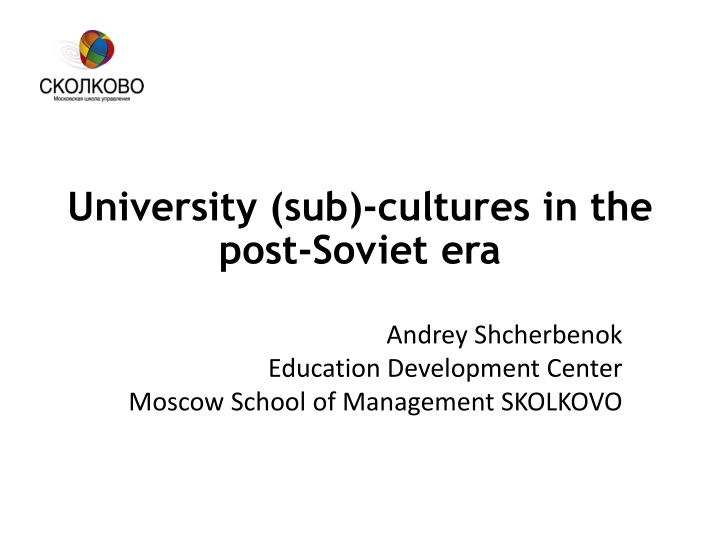

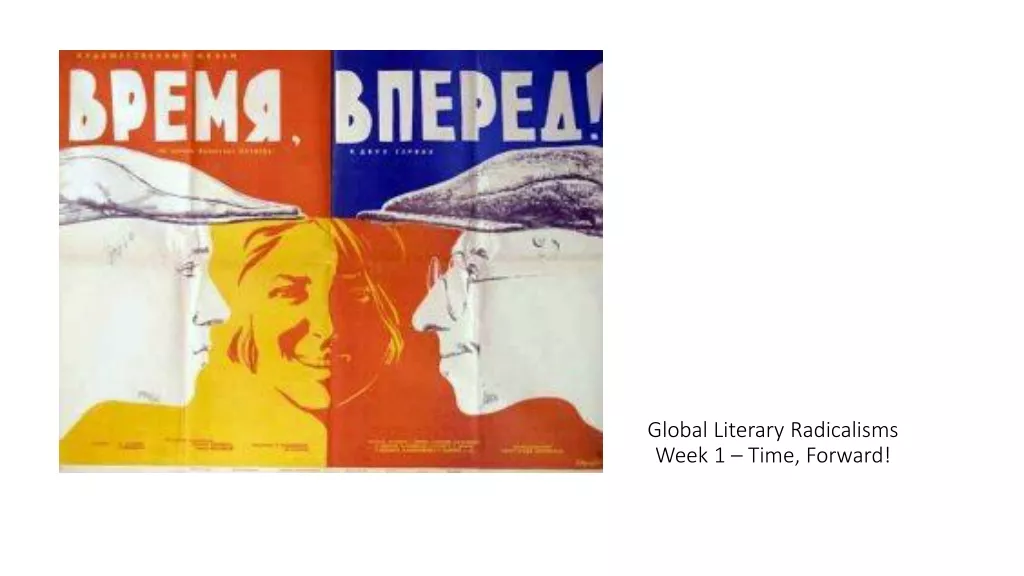
![[PDF⚡READ❤ONLINE] Energiya-Buran: The Soviet Space Shuttle (Springer Praxis Book](/thumb/21613/pdf-read-online-energiya-buran-the-soviet-space-shuttle-springer-praxis-book.jpg)

